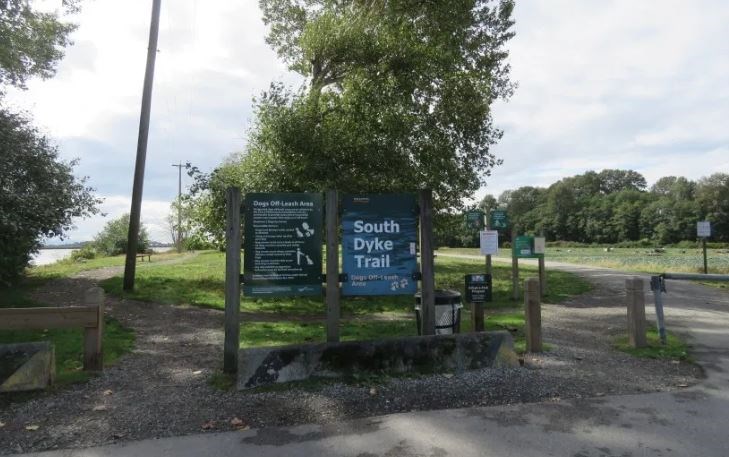Dear Editor,
As the project advanced, I became increasing alarmed by what the city is up to at Woodwards Slough, at the south end of Garden City Road.
I’ve read the city’s document about this Woodward’s Slough Habitat Compensation. It foretells of compensating losses from when drainage canals were in-filled for East Richmond roadway widening, and as dictated by DFO, the city must create 11,000m of restored riparian habitat.
It mentions fish habitat (not salmon specifically; migrating salmon couldn’t get in or out of that area anyways as the waterway is sealed from the river by a pumphouse).
It all looks OK on paper, but in real life, with the project well underway, it’s a barbaric devastation that no doubt everyone will soon forget once it greens in. So go have a look now while the oversized Tonka toys are still digging their trenches, making their tidy piles of imported topsoil, and spending your tax dollars.
I can only conclude that the City of Richmond has failed to adequately research contemporary trends in habitat restoration — a noble activity, but one that is less about bludgeoning an entire landscape (full of organisms large and small: furry, feathered, winged and rooted) into submission than about working gently with what’s already there. In this case, that was a well-established meadow of many local species co-existing with opportunistic plants from elsewhere.
Sure, there were no raised human-friendly berm walkways, besides the railway line, but humans have plenty of places to wander in Richmond.
The area had numerous healthy native Black Hawthorne trees, which flower for bees into berries for birds (and great winemaking and as a herbal heart tonic for us), all of which have now been plowed under and replaced with nursery plugs, etc.
The document continues: “The design layout was chosen to minimize impact on existing trees, to follow the natural ground contours...” Could have fooled me. Where a small extended ditch attached to the existing slough may have sufficed, in typical dominator style, our ambitious designers have wiped out a perfectly happy buzzing ecosystem and imposed their grand vision — a riparian Versailles, onto something they didn’t understand and didn’t bother to study.
This thinking can work well for obliterating forests and farmland for subdivisions, but not supplanting nature’s messy order with our own idealized version of the same.
Glen Andersen
RICHMOND



